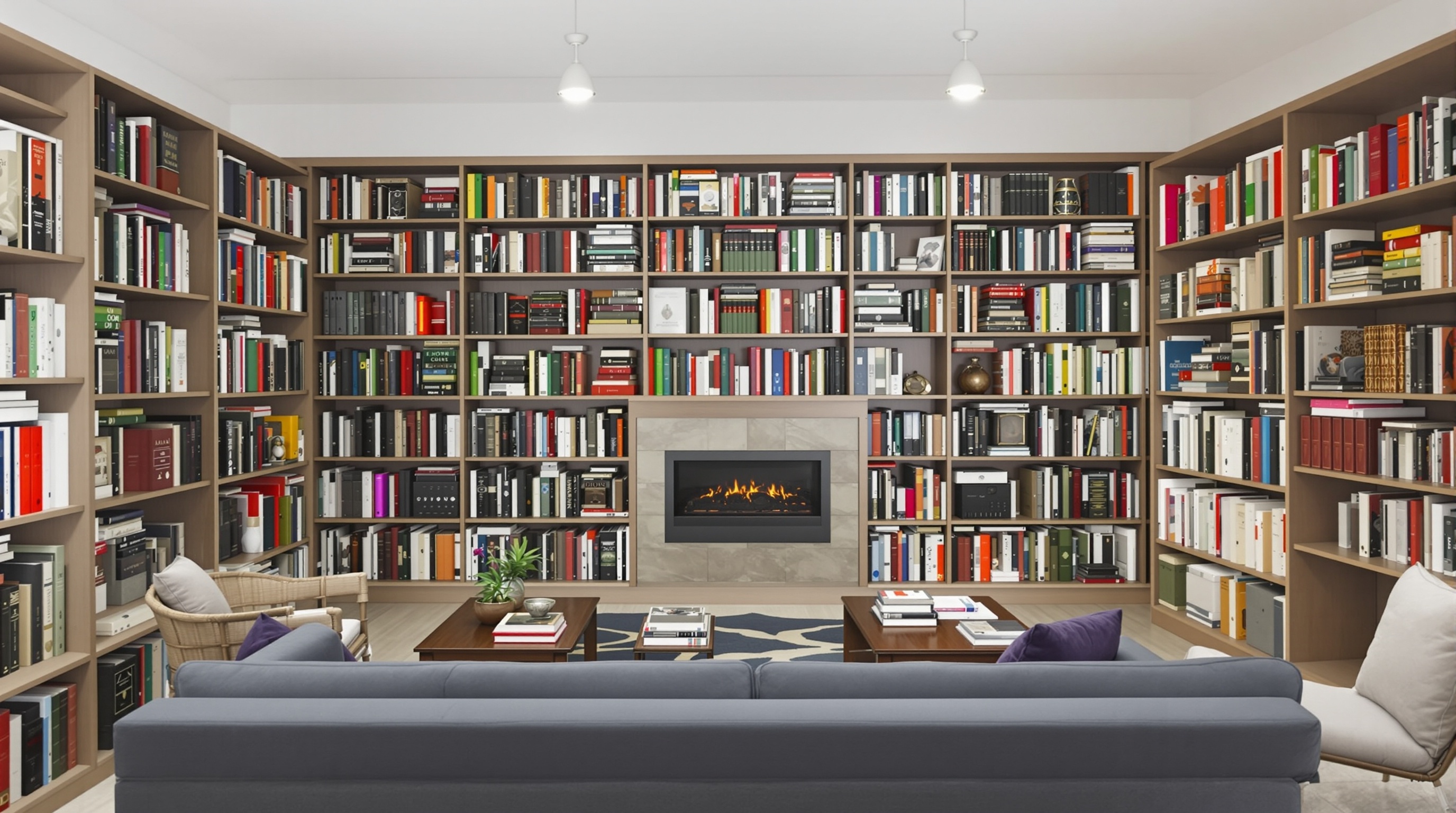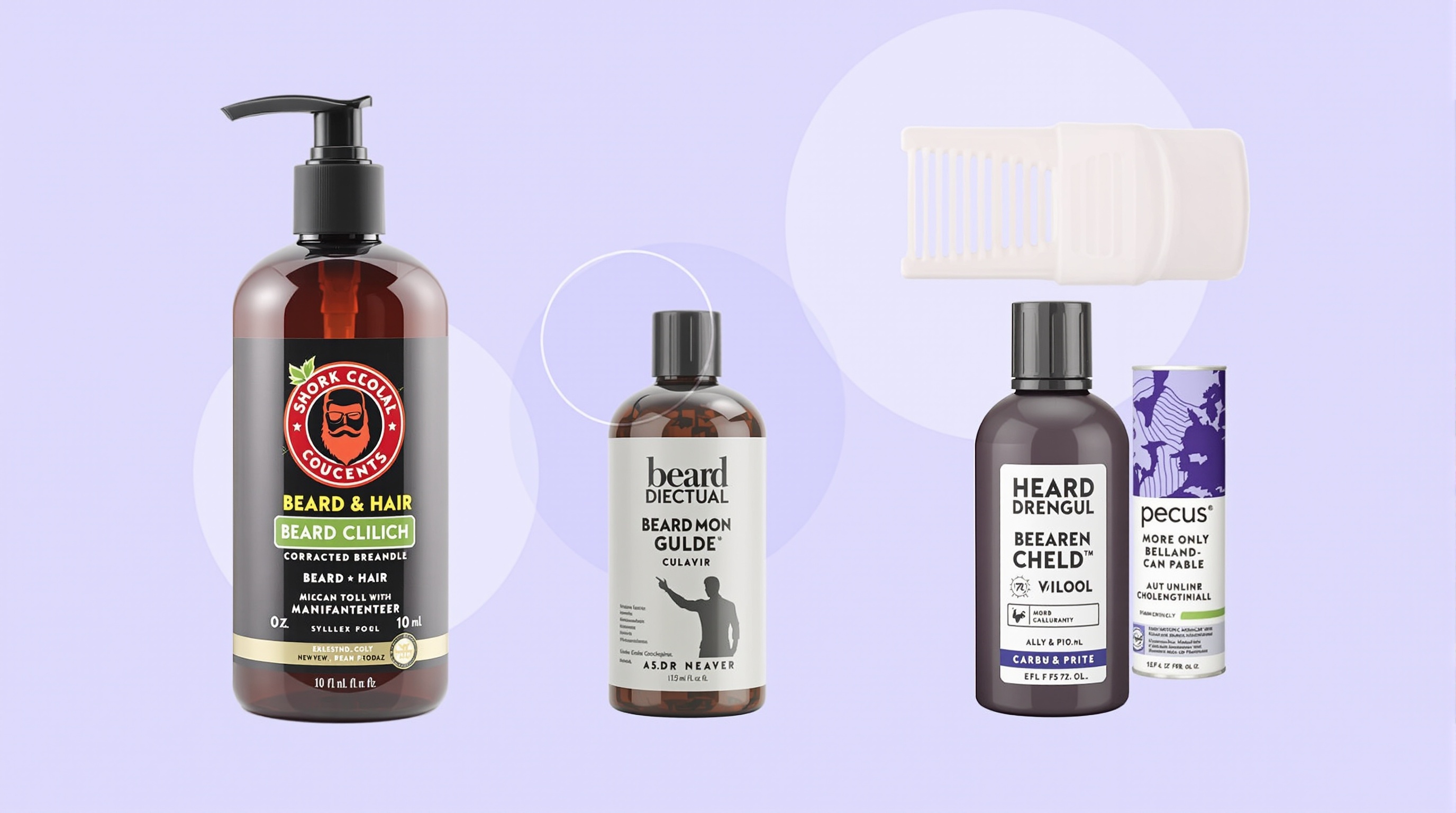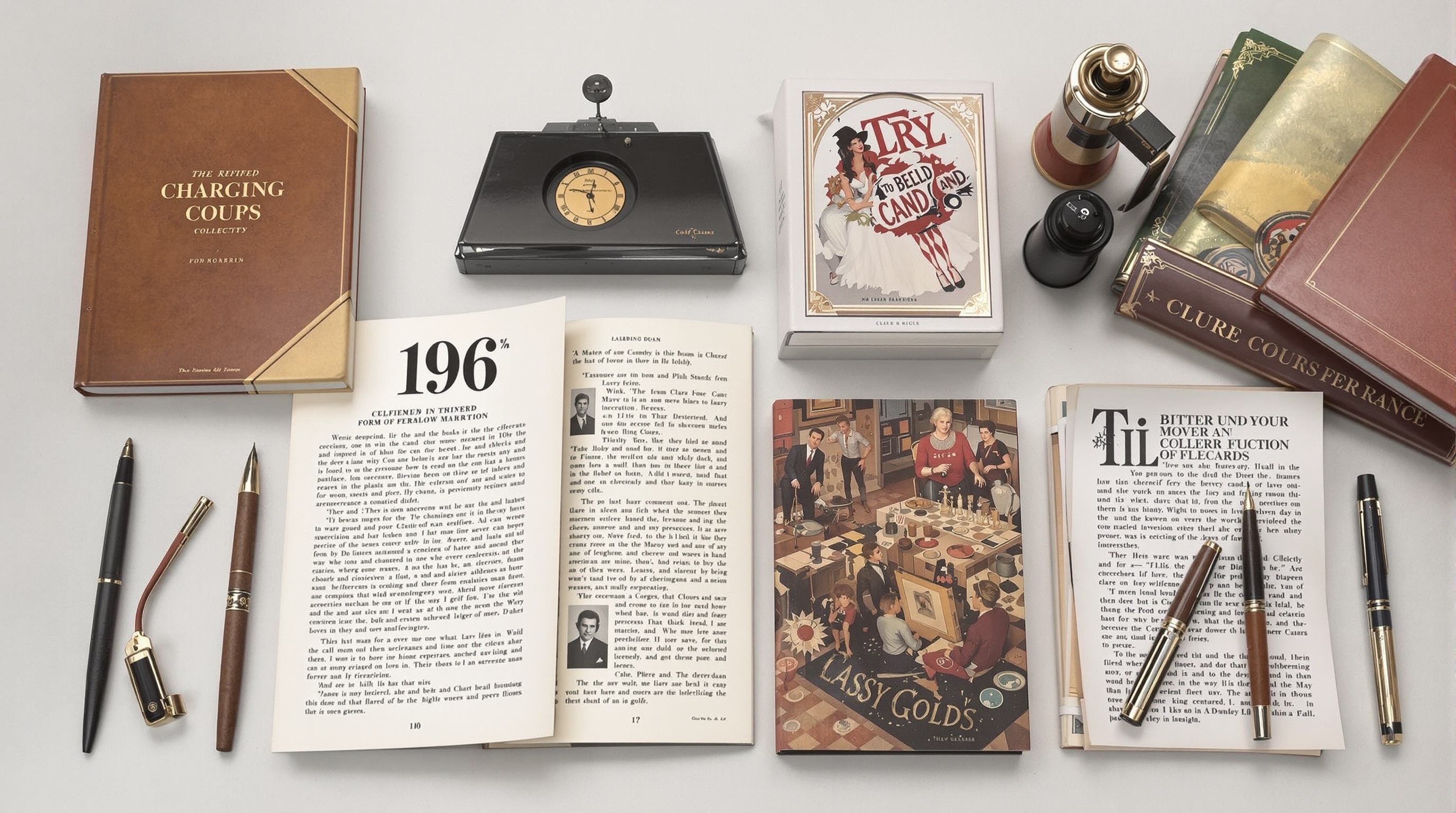Mastering Classic Men’s Style: Timeless Wardrobe Essentials
Discover the fundamentals of classic men’s style with this timeless wardrobe guide. Learn how to build a refined look, from essential staples to modern tailoring and fit.

Classic men’s style is about timeless pieces, clean lines, and effortless sophistication—qualities that never go out of fashion. Whether you're building a wardrobe from scratch or refining your look, understanding the principles of fit, quality, and versatility is essential. This guide breaks down everything from foundational mindset shifts to must-have wardrobe staples, helping you create a refined personal style that withstands seasonal trends and adapts to modern life.
Foundations of Classic Style
Understanding Style as a Learned Skill
Classic men's style isn’t something one is born with—it’s a cultivated skill that anyone can develop over time. Just like learning to cook, play an instrument, or speak a new language, building an understanding of personal style requires observation, practice, and refinement. Recognizing that style is accessible to all men removes the intimidation factor and empowers beginners to take the first steps with confidence. This foundational mindset shift is essential: good style is not about genetics or wealth; it’s about effort and awareness.
Developing a Fashion "Eye"
A crucial part of improving style is training your eye to recognize what works and why. This means paying attention to the details of well-dressed individuals—whether in person, on social media, or in classic films. Observe how colors are balanced, how garments fit, and how accessories are used. Over time, these observations help develop a sense of visual taste and judgment. Following respected menswear influencers, browsing lookbooks from classic brands like Brooks Brothers or Ralph Lauren, or studying historical fashion icons such as Cary Grant or Steve McQueen can accelerate this process.
The Role of Fit in Overall Appearance
Fit is the single most important element in classic menswear. Regardless of how expensive or stylish a garment may be, if it doesn't fit properly, it will undermine the entire look. Classic style emphasizes garments that follow the natural lines of the body without being overly tight or excessively loose. For example, a well-fitted blazer should hug the shoulders properly and taper at the waist, while trousers should break cleanly at the shoe. Tailoring, even for inexpensive clothing, can dramatically improve how pieces look and feel.
Building a Network of Style Inspiration
To sustain progress and keep your style evolving, it helps to build a personal network of inspiration. This can include bookmarking style blogs, following Instagram accounts dedicated to classic menswear, or joining online communities like r/malefashionadvice or Styleforum. Offline, it may involve seeking advice from well-dressed friends or visiting menswear boutiques where knowledgeable staff can provide guidance. Over time, this exposure will help refine your taste, introduce you to new ideas, and keep your wardrobe current while grounded in timeless principles.
Essential Classic Wardrobe Pieces
A well-curated classic wardrobe serves as the foundation of timeless style. These essential pieces are not dictated by trends, but by enduring design, versatility, and function. Investing in the following garments ensures that a man is prepared for a variety of settings, from casual to formal, with confidence and ease.
The Navy Blazer
The navy blazer is arguably the cornerstone of classic menswear. Its structured silhouette and neutral tone make it suitable for both professional and social settings. Pair it with chinos or grey trousers for a business casual look, or dress it down with dark denim and loafers for a polished weekend outfit. Opt for a single-breasted, two-button style with minimal padding for maximum versatility.
The White Oxford Cloth Button-Down Shirt (OCBD)
The white OCBD is timeless, durable, and incredibly adaptable. Its soft collar roll and thick fabric give it a relaxed yet refined appearance that works equally well under a blazer or worn solo with jeans. This shirt transitions effortlessly from the office to weekend gatherings, making it an indispensable piece in any classic wardrobe.
Dark, Well-Fitting Denim
A pair of dark indigo jeans in a straight or slim-straight fit offers both comfort and style. Avoid distressing or excessive fading—clean, minimal denim allows for flexibility in dressing up or down. When paired with a tucked-in shirt and leather boots or loafers, they provide a sharp casual look that aligns with classic sensibilities.
Grey Wool Trousers
Grey wool trousers add a refined touch to any outfit. They pair easily with blazers, button-downs, or knitwear, and are appropriate for both business and more formal social occasions. Mid-grey is the most versatile shade, balancing well with navy, brown, black, and even more vibrant colors.
Navy or Charcoal Suit
Every man should own a high-quality, well-fitted navy or charcoal suit. These colors are universally flattering and suitable for a wide range of formal occasions. A single-breasted, two-button suit with notch lapels is the most versatile design. When worn as separates, the jacket and trousers can be repurposed for smart-casual looks as well.
White and Light Blue Dress Shirts
A rotation of white and light blue dress shirts is essential for professional and formal settings. These shirts serve as a clean canvas for ties and jackets, and their simplicity ensures longevity in a wardrobe. Choose high-quality cotton poplin or twill for structure and breathability.
Crewneck and V-Neck Sweaters
Knitwear in neutral tones like grey, navy, or camel enhances layering options and adds visual interest without overwhelming simplicity. Merino wool or cashmere crewnecks and v-necks can be worn over shirts or under jackets, offering warmth and polish in cooler months.
Leather Oxford or Derby Shoes
Footwear plays a crucial role in classic dressing. A pair of black or dark brown leather Oxfords or Derbies complements tailored clothing and elevates casual ensembles. Goodyear-welted construction is preferred for durability and ease of repair, making them a long-term investment.
Brown Leather Loafers
For a more relaxed yet refined option, brown leather loafers—such as penny or tassel styles—strike the perfect balance. They work well with chinos, denim, and even suits in less formal settings. Loafers offer versatility without sacrificing elegance.
Chinos in Neutral Colors
Chinos in shades like khaki, olive, navy, or stone are ideal for smart-casual dressing. Their clean lines and lightweight cotton twill fabric make them a comfortable alternative to denim while retaining a sharp appearance. They pair well with both dress shirts and polos.
Classic Outerwear: The Trench and the Topcoat
Outerwear should combine function with timeless design. A beige trench coat offers protection against rain while enhancing formal and casual outfits alike. In colder months, a wool topcoat in navy, camel, or charcoal provides warmth and sophistication over suits or knitwear.
Minimal Accessories
Classic style favors function and subtlety in accessories. A leather belt matching the color of your shoes, a simple stainless steel or leather-strap watch, and a few understated pocket squares or ties in solid colors or subtle patterns are sufficient to express personal taste without distracting from the overall look.
By building a wardrobe around these essential pieces, men can achieve a timeless aesthetic that is appropriate, adaptable, and effortlessly stylish across a wide range of settings.
Building a Classic Wardrobe
Creating a classic wardrobe is both a strategic and practical endeavor that sets the foundation for timeless personal style. A well-curated classic wardrobe focuses on longevity, versatility, and understated elegance, allowing men to dress with confidence and ease in nearly any setting. Below are the key components and strategies for building a wardrobe rooted in classic men's style.
Understand the Core Principles
Before purchasing any clothing, it's essential to understand what makes a wardrobe "classic." Classic menswear is characterized by clean lines, neutral color palettes, and timeless silhouettes that have stood the test of time. The emphasis is placed on fit, quality, and function rather than seasonal trends or excessive ornamentation.
Classic style avoids fleeting fashion statements and instead relies on garments that remain relevant across decades. Think of navy blazers, oxford shirts, wool trousers, and leather shoes — pieces that have been worn by stylish men for generations.
Start with Foundational Pieces
A classic wardrobe starts with a strong foundation of essential garments. These items should be versatile, easy to mix and match, and appropriate for a wide range of occasions. Key foundational pieces include:
- White Oxford cloth button-down shirts
- Navy or charcoal wool trousers
- Well-fitted dark denim jeans
- Solid crewneck or V-neck sweaters in merino or cashmere
- Unstructured navy blazer or sport coat
- Plain white and grey T-shirts
- Brown or black leather dress shoes (Oxfords, Derbies, or loafers)
- Brown leather boots or chukkas
- Neutral-colored chinos (beige, olive, grey)
These items form the backbone of a wardrobe that can be dressed up or down, layered seasonally, and adapted to both formal and casual settings.
Prioritize Fit and Tailoring
No matter how classic or expensive a garment is, it will fail to look good if it doesn’t fit properly. Fit is the cornerstone of classic style. Shirts should contour the torso without pulling at the buttons, trousers should have a clean break at the shoe, and jackets should frame the shoulders naturally.
If off-the-rack items don't fit perfectly, consider the use of a tailor. Simple adjustments like hemming pants, taking in the sides of a shirt, or shortening jacket sleeves can dramatically improve the appearance of your clothing.
Stick to a Neutral Palette
Sticking to a neutral color scheme ensures maximum versatility and cohesion within your wardrobe. Core colors to build around include:
- Navy
- Charcoal grey
- White
- Black
- Olive
- Tan
- Brown
These colors are easy to mix and match, allowing you to create multiple outfits with fewer pieces. Once the foundation is solid, you can gradually incorporate select accent colors to reflect your personal taste.
Invest in Quality Over Quantity
Classic wardrobes are built for longevity. Investing in fewer, higher-quality items will serve you better than chasing fast fashion or sale racks. High-quality garments not only look better but also age gracefully and last longer with proper care.
Key indicators of quality include:
- Natural fabrics like wool, cotton, linen, and leather
- Reinforced stitching at stress points
- Proper lining and construction on jackets
- Resoleable leather shoes
- Functional buttons and buttonholes
While these items may come with a higher upfront cost, their durability and timeless appeal make them worthwhile investments.
Focus on Versatility and Layering
A well-built classic wardrobe emphasizes versatility. For example, a navy blazer can be worn with dress trousers for formal occasions or with jeans for smart-casual settings. Likewise, a white Oxford shirt pairs just as well under a suit as it does with chinos and loafers.
Layering is another key strategy in classic style. It allows you to create depth and interest in an outfit while adapting to various temperatures. Start with lightweight base layers and build up with sweaters, vests, jackets, or coats as needed.
Build Around Lifestyle and Needs
Your classic wardrobe should reflect your actual lifestyle. If you work in a corporate environment, you’ll need more formal elements like suits and dress shoes. If your day-to-day is more casual or creative, focus on smart separates and elevated casual wear.
Start by identifying the clothing categories you use most (e.g., workwear, casual wear, activewear, formalwear), and build each of those segments gradually with classic pieces that serve multiple roles.
Use Accessories Strategically
Accessories in classic menswear are subtle but impactful. A few well-chosen accessories can elevate any look without overpowering it. Focus on:
- Leather belts in black and brown
- A classic wristwatch
- Pocket squares in neutral or muted tones
- Silk or wool ties in solid colors or conservative patterns
- Leather briefcases or tote bags
- Minimal jewelry (if any)
Accessories should complement your outfit, not dominate it. Choose items that add polish without drawing unnecessary attention.
Gradual Expansion and Seasonal Updates
Once your core wardrobe is in place, expand gradually. Introduce seasonal variations such as linen shirts and unlined blazers for warmer months, or heavier tweeds and flannels for winter. Stick to classic silhouettes and fabrics appropriate for each season.
Over time, you can also explore more nuanced details like subtle patterns (e.g., herringbone, windowpane), texture mixing, or slightly bolder color accents — always within the classic framework.
Reference Style Icons and Timeless Examples
To stay inspired and grounded in classic style, study men who have mastered it. Look to style icons like:
- Cary Grant
- Steve McQueen
- Paul Newman
- Ralph Lauren
- David Beckham (in his classic iterations)
- Tom Ford (for modern tailoring)
These men exemplify how timeless pieces can be worn with confidence and grace across decades. Their wardrobes emphasize fit, simplicity, and an eye for enduring design.
Maintain and Evolve
A classic wardrobe requires upkeep and occasional editing. Regularly:
- Rotate seasonal items
- Repair or replace worn-out pieces
- Reassess fit as your body or preferences change
- Donate items that no longer align with your style
As your understanding of style deepens, you may refine your wardrobe even further, developing a personal version of classic menswear that feels authentic and effortless.
Modern Application of Classic Style
The enduring appeal of classic men’s style lies in its ability to evolve with the times while maintaining its foundational principles. Today’s modern man can incorporate timeless elements into his wardrobe without appearing outdated or out of place. The key is thoughtful integration—keeping the core aesthetics intact while adapting to contemporary lifestyles, environments, and expectations.
Updating the Silhouette
One of the most noticeable modern applications of classic style is in silhouette and tailoring. While classic menswear traditionally emphasized structured tailoring—think wider lapels, fuller trousers, and longer jacket lengths—modern interpretations favor a slimmer, more streamlined fit. This doesn’t mean tight or restrictive, but rather proportionally tailored to flatter the individual’s body.
For example, a navy blazer remains a classic staple, but today’s version might feature a slightly shorter length, higher armholes, and minimal padding to reflect a cleaner, more youthful appearance. Similarly, trousers with a medium rise and a tapered leg present a refined update to the full-cut trousers of decades past.
Integrating Casual Elements
Classic style can be seamlessly adapted into casual wardrobes, a necessity in modern dress codes that often lean informal. Mixing tailored items with casual pieces allows for a balanced look that’s both smart and relaxed. Think oxford shirts with dark denim, or a sport coat paired with chinos and loafers. These combinations respect the essence of classic style while embracing the flexibility of today’s fashion expectations.
The rise of business casual and remote workwear has also led to an increased demand for comfort without sacrificing style. Garments such as unstructured blazers, knit polos, and drawstring trousers made from high-quality fabrics are modern solutions that maintain a classic profile while offering everyday wearability.
Modern Fabric and Technology
Technological advancements in textiles have made it easier than ever to wear classic styles in a practical, modern context. Performance fabrics that resist wrinkles, wick moisture, and offer stretch are now available in pieces like dress shirts and trousers. These innovations allow men to maintain a polished look throughout a busy day without compromising comfort or functionality.
Additionally, sustainable and ethically produced materials are gaining traction. Opting for garments made from organic cotton, responsibly sourced wool, or recycled fibers aligns with contemporary values while maintaining timeless aesthetics.
Updated Color Palettes
While classic style often emphasizes neutrals such as navy, grey, brown, and white, modern applications have expanded the palette to include muted earth tones, olive greens, burgundy, and even select pastels. These colors maintain the understated elegance of classic menswear but provide more room for personal expression and seasonal adaptation.
A tan suede jacket, for instance, can serve as a modern alternative to the traditional navy blazer, offering texture and warmth while remaining rooted in classic design.
Accessorizing with Intent
Modern classic style also embraces a refined approach to accessories. Instead of flashy or overly branded pieces, today’s well-dressed man opts for minimal, functional accents. Think clean leather sneakers with a tailored outfit, a classic watch with a contemporary dial, or a structured tote bag in full-grain leather. These items enhance an outfit without overpowering it, staying true to the classic principle of understated elegance.
Digital Influence and Global Reach
The internet and social media have democratized access to style inspiration and education. Men now have the tools to learn about classic style from global perspectives, blending influences from Italian sprezzatura, British tailoring, and American prep. This global exchange has led to a more informed and personalized application of classic principles.
Online communities, digital lookbooks, and style influencers provide daily insights on how to modernize traditional pieces, from mixing vintage blazers with sneakers to layering turtlenecks under sport coats—ideas that would’ve been unconventional in past decades but are now stylishly acceptable.
Maintaining the Core Principles
Despite all these modern adaptations, the foundational elements of classic style remain: fit, quality, simplicity, and purpose. Whether wearing a tailored wool coat or a merino crewneck sweater, the goal is to appear intentional and composed. Modern classic style isn’t about chasing trends—it's about making timeless pieces relevant in your current life context.
By understanding the rules of classic menswear and applying them strategically, any man can develop a wardrobe that is both timeless and contemporary—one that respects tradition while confidently embracing the present.
Maintaining Classic Style
Maintaining a classic men's style is not just about wearing traditional pieces—it's about preserving timeless elements while adapting them to your lifestyle and the modern era. A well-maintained classic wardrobe emphasizes longevity, refinement, and clarity in personal presentation. This section will explore key practices for ensuring your classic style remains relevant and polished over time.
Prioritizing Fit and Tailoring
The cornerstone of classic menswear is fit. Even the most traditionally designed garments lose their elegance if they do not fit properly. Maintaining classic style means routinely assessing the fit of your clothing and making necessary adjustments. Regular visits to a tailor can keep garments aligned with your body's changes while preserving their original structure and silhouette.
Tailoring not only improves comfort and appearance but also extends the lifespan of your garments. A well-fitted blazer, for instance, can elevate a simple outfit and reinforce the sharp lines that define classic menswear.
Choosing Timeless Materials
To maintain classic style, prioritize garments made from natural and time-tested materials like wool, cotton, linen, and leather. These fabrics not only age gracefully but also offer breathability, durability, and a tactile richness that synthetic materials often lack.
Wool flannel trousers, cotton Oxford shirts, and full-grain leather shoes are staples that, with proper care, can last for years. Investing in high-quality materials ensures your wardrobe retains its integrity and aesthetic appeal over time.
Sticking to a Core Color Palette
Classic style is sustained through a consistent and neutral color palette. Shades such as navy, charcoal, beige, olive, white, and brown dominate traditional menswear and offer effortless coordination. Maintaining this palette allows for maximum versatility and minimizes the risk of clashing or trend-driven color mistakes.
While occasional accents of color can add interest, the backbone of a classic wardrobe should remain understated. This ensures your outfits remain appropriate across seasons and settings.
Practicing Proper Garment Care
Classic style is as much about upkeep as it is about selection. Learning to care for your garments—using wooden hangers, brushing suits, folding knits properly, and polishing shoes—goes a long way in preserving their shape, texture, and color.
Dry-cleaning should be used sparingly and only when necessary. Over-cleaning can deteriorate fabrics and shorten the life of your clothing. Instead, use spot cleaning, steaming, and airing out garments to maintain freshness.
Avoiding Over-Accessorizing
Classic menswear favors subtlety over excess. Accessories should enhance, not distract. A leather strap watch, a silk pocket square, or a pair of understated cufflinks can add refinement, but too many flashy details can overwhelm an otherwise timeless look.
When in doubt, keep accessories minimal and functional. Maintaining classic style involves knowing when to subtract rather than add, allowing the quality and cut of your clothing to speak for itself.
Updating Within Classic Boundaries
Though classic style is rooted in tradition, it is not static. Staying current by updating certain elements—such as slimmer lapels, shorter jacket lengths, or modernized footwear silhouettes—can keep your look fresh without compromising the timeless foundation.
Incorporate subtle trends cautiously and only when they align with your overall aesthetic. The goal is to evolve, not overhaul. A classic wardrobe should feel relevant, not dated or costume-like.
Staying Inspired by Style Icons
Maintaining classic style is easier when you have visual references. Look to style icons such as Cary Grant, Steve McQueen, or more contemporary figures like David Beckham or Daniel Craig. These individuals exemplify how classic style can be maintained and modernized tastefully.
Regularly studying well-dressed men—past and present—helps reinforce the visual language of classic menswear and keeps your personal style grounded in proven elegance.
Classic men’s style isn’t about having more—it’s about having the right pieces and wearing them well. By investing in timeless staples, focusing on fit, and evolving with intention, any man can develop a personal style that’s sharp, confident, and always appropriate. Whether you're just beginning or refreshing your wardrobe, commit to mastering the essentials—and let classic style work for you every day. Ready to redefine your look? Start with one staple, and build from there.




